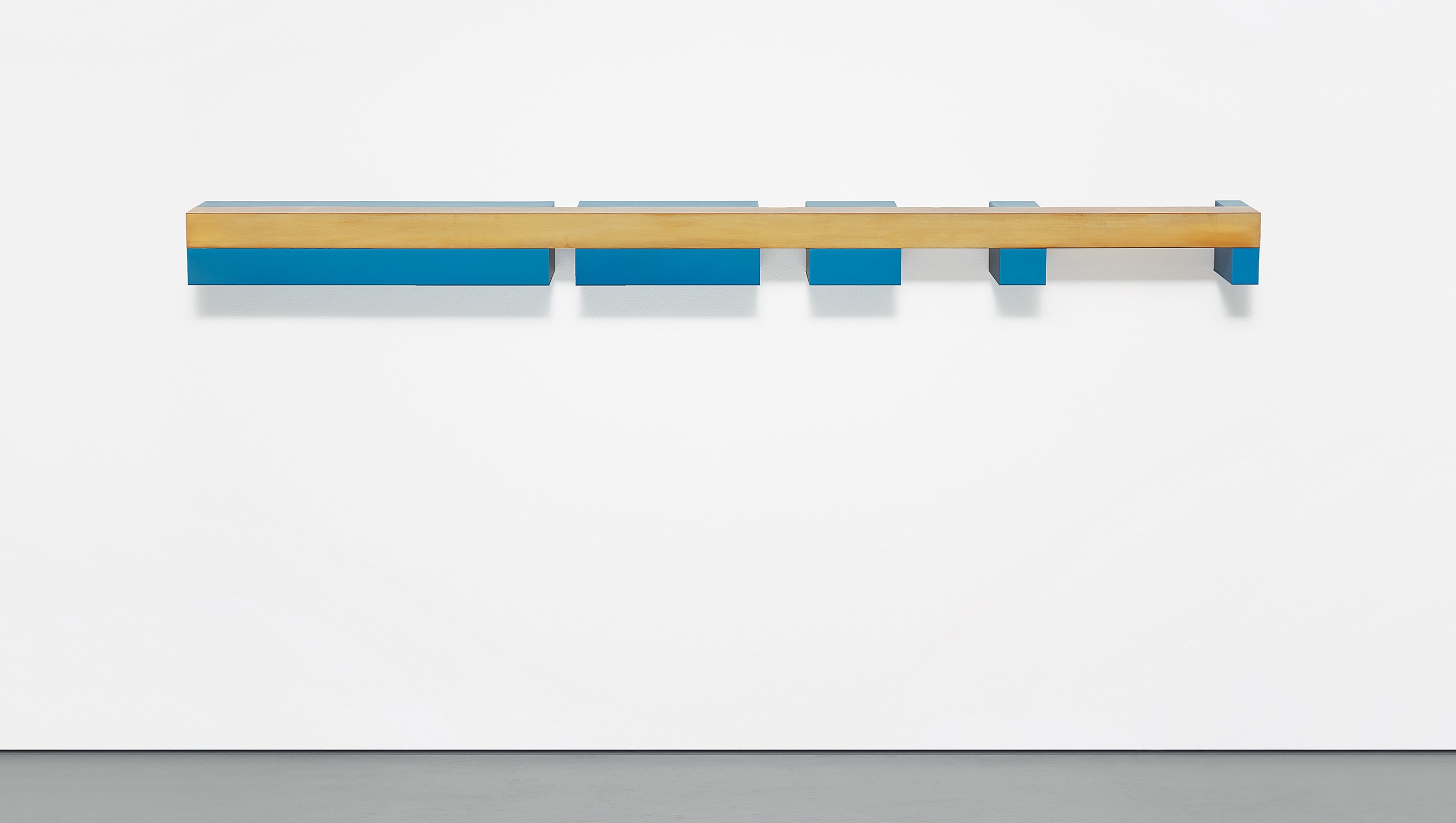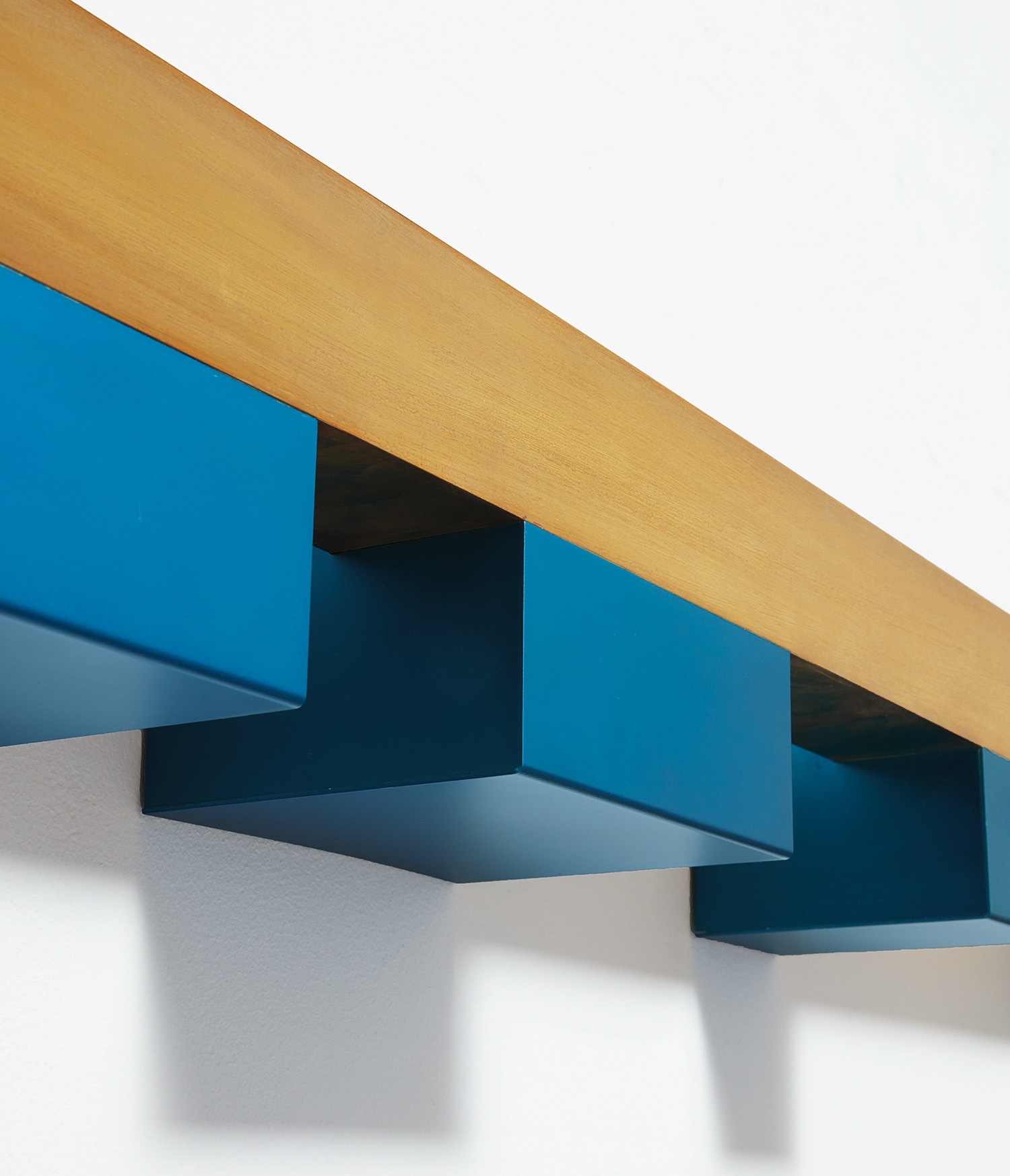



33
Donald Judd
Untitled
Full-Cataloguing
The present work’s storied provenance captures a unique snapshot in time. Shortly after its execution in March 1970, untitled was exhibited in The Helman Gallery in Saint Louis, which was run by the collector-cum-dealer Joseph Helman. Formerly a real estate developer, he discovered collecting via Leo Castelli, Judd’s primary dealer. When Helman decided to open his own gallery in Saint-Louis in 1969, he became part of what Irving Blum described as Castelli’s “group of ‘lieutenants’: Joe Helman in St. Louis, Bruno [Bischofberger] in Switzerland, Ileana [Sonnabend] in Paris, Robert Fraser in England, Gian Enzo Sperone in Italy”, with Blum becoming “Leo’s guy on the West Coast” (Irving Blum, quoted in Peter M. Brant, “Irving Blum”, Interview, March 30, 2012, online). After residing in the St. Louis collection of artist and critic Mary King Swayzee, untitled returned to Helman, then at the Blum-Helman Gallery in New York that he co-founded with Blum in 1974.
Executed in 1970, the present work was built on the innovations that had garnered Judd critical acclaim as one of the key progenitors of the new movement of minimalism in the mid-1960s, though he himself adamantly rejected any such affiliation. It relates directly to one of the very first progressions Judd created in 1964, a red and purple work consisting of five wooden forms aligned at intervals to an aluminum square pipe that would form the prototype for the untitled progression from 1965 that now resides in the Phoenix Art Museum. Conceived concurrently to his rounded, so-called “bull nosed” progressions, this format would inspire Judd to explore variances in scale, interval sequences, colors and materials in the ensuing years. In March 1970, he returned to this early configuration in two very similar editions that demonstrated the same scale and sequencing of forms: the first consisting of brass and red enameled aluminum; the second, to which the present work belongs, consisting of brass and blue anodized aluminum. Only twice thereafter, in 1974, did Judd return to this early format that had ushered in his celebrated series of progressions.
Resembling neither painting nor traditional relief sculpture, Judd’s progressions convey the vision that had guided him away from painting in the early 1960s, namely that “actual space is intrinsically more powerful and specific than paint on a flat surface” (Donald Judd, “Specific Objects”, 1965, in Donald Judd: Complete Writings, New York, 1975, p. 181). Made in collaboration with fabricators and new industrial materials, Judd’s three-dimensional objects challenge traditional notions of art making and composition. With his progressions, Judd based the repetition of serial forms and spaces on an internal, mathematical logic. In addition to Fibonacci and inverse natural numbers sequences, for shorter objects such as the present one, Judd applied an additive progression whereby the values of both solid form and void alike continually double. Space then becomes a tangible formal element of the work; no longer a void, it becomes instead a positive entity that guides the viewer’s perception. “The space between,” as Judd postulated, “can be even more definite than the two objects which establish it” (Donald Judd, “Some Aspects of Color in General and Red and Black in Particular”, in Donald Judd: The Multicolored Works, New Haven, 2014, p. 265).
Space, shape, surface and color coalesce in untitled, conveying Judd’s conception of “the thing as a whole”. The cobalt blue and gleaming brass that comprise the work speaks to Judd’s detailed study of color in the works of such artistic forebears as Rogier van der Weyden, Titian, Henri Matisse, Josef Albers, and Mark Rothko, yet it is incorporated with a very specific purpose in mind. Judd’s early color combinations almost always consist of one or more highly reflective, as well as colored, surfaces, derived from a ready-made palette of commercial color samples in order to avoid any metaphorical associations. Color here is assimilated as an inherent, rather than superficial, quality to the work. True to Judd’s espousal of sensory wholeness, color is then freed from traditional connotations and rendered three-dimensional – so that ultimately, as Judd postulated, “color and space occur together” (Donald Judd, “Some Aspects of Color in General and Red and Black in Particular”, in Donald Judd: The Multicolored Works, New Haven, 2014, p. 275).
Donald Judd
American | B. 1928 D. 1994Donald Judd came to critical acclaim in the 1960s with his simple, yet revolutionary, three-dimensional floor and wall objects made from new industrial materials, such as anodized aluminum, plywood and Plexiglas, which had no precedent in the visual arts. His oeuvre is characterized by the central constitutive elements of color, material and space. Rejecting the illusionism of painting and seeking an aesthetic freed from metaphorical associations, Judd sought to explore the relationship between art object, viewer and surrounding space with his so-called "specific objects." From the outset of his three-decade-long career, Judd delegated the fabrication to specialized technicians. Though associated with the minimalist movement, Judd did not wish to confine his practice to this categorization.
Inspired by architecture, the artist also designed and produced his own furniture, predominantly in wood, and eventually hired a diverse team of carpenters late in his career.